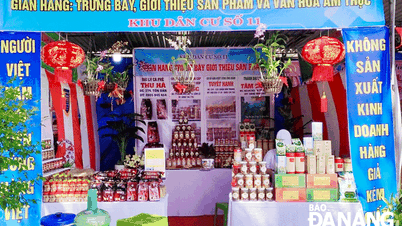The domestic gold market has reversed immediately after the direction of General Secretary To Lam at the working session with the Central Policy and Strategy Committee on mechanisms and policies to effectively manage the gold market in the coming time. The decrease in gold prices is not only due to the decrease in world prices but also the gap between domestic and world gold and the difference in buying/selling prices, which is a "chronic disease" of our country's gold market, has also been significantly shortened.
New management thinking: “open to governance”
As of this afternoon, May 29, the domestic gold price has dropped the most in the past month, and decreased by more than 1 million VND/tael compared to yesterday. Trading is around 115.5 - 118 million VND/tael (buy - sell). The difference between buying and selling prices has decreased by 500,000 VND/tael compared to the previous day and the difference between domestic and world gold prices has also narrowed by 2-3 million VND/tael.
 |
| The gold market needs to be managed in the spirit of strongly shifting from administrative thinking to disciplined market thinking. Illustrative photo |
The World Gold Council in its report in early 2025 gave a startling figure: Vietnam is the region's leader in gold consumption, and most of this is gold bars, meaning for storage. Specifically, in 2024, Vietnam's gold consumption reached 55.3 tons, a slight decrease compared to 55.5 tons in 2023, ranking first in ASEAN compared to 48.8 tons in Thailand; 47.3 tons in Indonesia and 13.3 tons in Singapore. However, it is worth noting that Vietnam's demand for gold bars, ingots and coins increased by 4% over the past year, with 42.1 tons, the highest level since 2016; while demand for gold jewelry decreased by 13% compared to the same period in 2023, reaching 13.2 tons.
High prices compared to the world, buying gold by “distribution”, widening buying-selling gap… all these “non-market” factors cannot stop the demand for gold of Vietnamese people. The higher the price, the more people queue up to buy because they are afraid of missing out on the opportunity and afraid that gold will continue to increase in price. And so, the domestic gold market is stuck in a mess without any way to completely resolve it.
A representative of a gold trading enterprise based on Tran Nhan Tong Street ( Hanoi ) emphasized: "It is undeniable that the efforts of the state management agency in restoring order to the gold market and limiting the goldization of the economy through strict management policies over the past 10 years, through Decree 24. However, with market fluctuations, changes in the economy and especially new business trends, the "shirt" of Decree 24 is too tight. The domestic gold market needs a fundamental and radical innovation."
The direction of General Secretary To Lam on gold market management, during the working session with the Central Policy and Strategy Committee, not only demonstrates the close attention of the top leadership to a specific market, but also opens up a new management mindset, more principled and practical. Accordingly, the gold market needs to be managed in the spirit of strongly shifting from administrative thinking to disciplined market thinking, from "tightening to control" to "opening to govern".
Looking back at the domestic gold market in recent times, especially from the beginning of 2024 until now, we can clearly see the instability in operation. The gap between domestic and international gold prices has continuously widened, at times reaching up to 20 million VND/tael. Gold bar prices have increased abnormally, while the market almost revolves around only one main brand, SJC gold. The strong fluctuations do not come from pure supply and demand factors but reflect distortions in the market structure, showing that policy barriers have caused a lack of flexibility in the context of the health of the economy having many positive signals and needing macroeconomic stability, psychological stability as well as social trust.
Synchronize multiple solutions to realize direction
The General Secretary's thorough understanding of the direction of gold market management based on market principles, with effective regulation by the State, is a significant shift in both thinking and institutions. It is noteworthy that this directive does not stop at requiring a change in approach, but also emphasizes respect for ownership rights, property rights, and the right to freedom of legitimate business of people and enterprises, which have been narrowed for a long time due to the "tightening to manage" mindset. This is the foundation for restoring market confidence, moving towards a transparent, diverse, disciplined gold market and contributing to macroeconomic stability.
To realize the guiding spirit, it is necessary to synchronize many solutions, from adjusting institutions, redesigning the market structure to innovating the regulatory methods of the management agency. First of all, it is time to consider establishing a national gold exchange under a public, transparent mechanism, with State control but in a constructive, non-subsidized direction. The gold exchange will help form a centralized trading place, reduce speculation, increase liquidity, and serve as a basis for establishing a price level according to actual supply and demand. In addition, the development of gold account products, gold derivatives and futures contracts will create risk prevention tools for businesses and investors, reducing pressure on physical gold transactions, which are potentially high-risk and cause tension for monetary policy.
One of the major bottlenecks in the current gold market is the monopoly in importing and processing gold bars. In fact, this mechanism was once built with the goal of strictly managing the flow of gold, controlling exchange rates and stabilizing the macro economy. However, after more than a decade of implementation, this mechanism is no longer suitable, causing supply distortion, increasing speculative opportunities and being easily exploited to manipulate prices. Expanding import rights to a number of enterprises with sufficient management and financial capacity, under the supervision of the State Bank, is necessary to ensure competitiveness, stabilize supply and demand and reduce the price gap between the domestic and world markets.
At the same time, the regulatory role of the State Bank also needs to be reshaped in the direction of not rigidly intervening administratively, but proactively using market tools to stabilize psychology and control fluctuations. The transparent publication of data on supply-demand, import volume, national gold reserves or intervention timing should be placed within a transparent information framework, with a clear roadmap and principles. The gold market stabilization policy also needs to be closely integrated into the management of exchange rates, interest rates and monetary policy in general to avoid conflicting management or shifting pressure from one market to another.
In the long run, if the gold market is properly organized, it will not only be a channel for accumulating assets, but also a tool to reflect public expectations and confidence in macroeconomic management. When gold prices are formed according to market rules, not distorted by closed mechanisms or speculation, people will be less confused and less inclined to "put capital into gold" to avoid risks. That also means that resources will be allocated more effectively for production and business instead of being held in passive assets.
The General Secretary's directive has set out a new management mindset: Open the market but not loosen discipline, create a wide enough legal corridor instead of imposing administrative orders. This is an important first step to build a healthy gold market, associated with market principles but with effective direction and supervision by the State. The remaining issue is to quickly institutionalize those ideas into concrete actions, from amending Decree 24/2012/ND-CP, which is already overdue, perfecting the legal system to reorganizing the market structure and innovating management capacity.
The General Secretary's directive has set a new management mindset: opening the market but not loosening discipline, creating a wide enough legal corridor instead of imposing administrative orders. This is an important first step to building a healthy gold market, associated with market principles but with effective direction and supervision by the State. The remaining issue is to quickly institutionalize those ideas into concrete actions, from amending Decree 24/2012/ND-CP, perfecting the legal system to reorganizing the market structure. |
Source: https://congthuong.vn/tu-duy-moi-cho-quan-ly-thi-truong-vang-co-ky-cuong-389953.html



![[Photo] A delegation of 100 journalists from the Vietnam Journalists Association visits the soldiers and people of Truong Sa island district.](https://vphoto.vietnam.vn/thumb/1200x675/vietnam/resource/IMAGE/2025/5/30/0984a986227d4e988177f560d2e1563e)

![[Photo] Prime Minister Pham Minh Chinh attends the event "Digital transformation of the banking industry by 2025"](https://vphoto.vietnam.vn/thumb/1200x675/vietnam/resource/IMAGE/2025/5/29/0e34cc7261d74e26b7f87cadff763eae)

![[Photo] Journalists moved to tears at the Memorial Service for the soldiers who died in Gac Ma](https://vphoto.vietnam.vn/thumb/1200x675/vietnam/resource/IMAGE/2025/5/30/9454613a55c54c16bf8c0efa51883456)



























































































Comment (0)